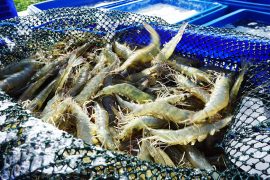
North Atlantic sea stars are crossbreeding, and it may help them survive
A new study published in the journal Molecular Ecology has confirmed that two species of sea stars are crossbreeding in the North Atlantic Ocean.
The study reveals genomic evidence of hybridization between two closely related sea star species: Asterias rubens, or the common starfish, and Asterias forbesi, known as Forbes’ sea star.
According to the researchers, hybrid starfish are now thriving from the shores of New England to the Canadian Maritimes.
First genomic evidence
“It is the first genome-wide evidence of extensive hybridization in an ecologically important coastal species,” said study co-author Melina Giakoumis, a PhD candidate with the CUNY Graduate Center’s Biology program and associate director of the Institute for Comparative Genomics at the American Museum of Natural History.
Focus of the study
In this investigation, the experts set out to answer a twofold question. First, were these sea stars engaging in crossbreeding in their natural habitats? And what environmental conditions might be driving this phenomenon?
How the research was conducted
The team obtained DNA samples from both starfish species at 33 sites in the North Atlantic for an in-depth DNA sequencing process.
The researchers also incorporated samples from Asterias amurensis, a sea star native to the Northern Pacific, serving as a control group.
What the researchers discovered
The genomic analysis revealed undeniable hybridization between the two sea star species stretching from Cape Cod to Nova Scotia.
Yet, what is even more fascinating is how the environmental preferences of each species, mirrored in their genomes, played a pivotal role.
A. forbesi, with its limited geographic span, has evolved to suit local environments, whereas A. rubens boasts a broader stretch reaching as far as western Europe.
Researchers have pinpointed the Gulf of Maine as a hotspot for hybridization, primarily where the habitats of these two species intersect.
New questions arise
Michael Hickerson is a biology professor with the CUNY Graduate Center and City College of New York.
“Two questions arise from this study,” said Hickerson. “Will the hybrids’ move to follow the changes in sea surface temperatures accelerate to the point of one species replacing the other?”
“Or will they rescue the two species by being a source of gene combinations that allow greater resilience to climatic changes due to increased adaptive variation.”
“Since sea stars preferentially eat dominant competitors, they provide stability to the ecosystem. These species are therefore crucial to study for marine conservation, as they have rippling effects throughout the rest of the community.”
Study implications
As “keystone species,” these sea stars play a vital role in sustaining marine ecosystems. Their absence from intertidal communities – the regions between high and low tide – can have catastrophic consequences.
Giakoumis noted that the Gulf of Maine is warming faster than 99% of the global ocean. “Our results imply that the distribution of genomic variation in North Atlantic sea stars is influenced by the environment, which will be crucial to consider as the climate changes.”
The results of the study have far-reaching implications, potentially guiding conservation strategies and the protection of the North Atlantic’s intertidal zones.
More about sea stars
Sea stars, commonly known as starfish, are iconic marine animals recognized worldwide. Here are some fascinating insights about these sea creatures:
Anatomy
Despite the name “starfish,” sea stars aren’t fish. They belong to the class Asteroidea in the phylum Echinodermata. Unlike fish, they don’t have gills, fins, or scales. Instead, they have a hard, calcified outer skeleton and a unique water vascular system that powers their tube feet, aiding in movement and feeding.
Regeneration
One of the most astounding abilities of sea stars is regeneration. If they lose an arm, they can grow it back. Some species can even regenerate a whole new sea star from just a fragment of a lost limb.
Diversity
There are about 2,000 known species of sea stars worldwide. They come in various colors, sizes, and shapes. Some have more than the typical five arms. For instance, the sun star can have up to 40 arms.
Feeding
Sea stars are carnivorous and primarily feed on bivalves like clams and mussels. They have an interesting feeding mechanism where they can eject their stomach out of their body to envelop and digest their prey, after which the stomach is retracted back into the body.
Habitat
While many sea stars live in shallow tidal waters, some species can be found in deep-sea habitats. They are commonly found on rocky shores, in the sand, and amidst seagrass beds.
Reproduction
Many sea stars release eggs and sperm into the water, where fertilization occurs. Some species also practice brooding, where the eggs are kept with the parent until they hatch.
Threats
Starfish face several threats, primarily from habitat destruction, pollution, and climate change. A notable example is the sea star wasting disease that has affected multiple sea star species, causing lesions and eventual disintegration.
Ecological role
Sea stars play a crucial role in marine ecosystems. They’re considered keystone species, meaning they have a disproportionately large impact on their environment. By feeding on mussels and other creatures, they maintain the balance of marine ecosystems, ensuring biodiversity.
Want to read more? Subscribe to our newsletter for engaging articles, exclusive content, and the latest updates.
—-
Check us out on EarthSnap, a free app brought to you by Eric Ralls and Earth.com.













